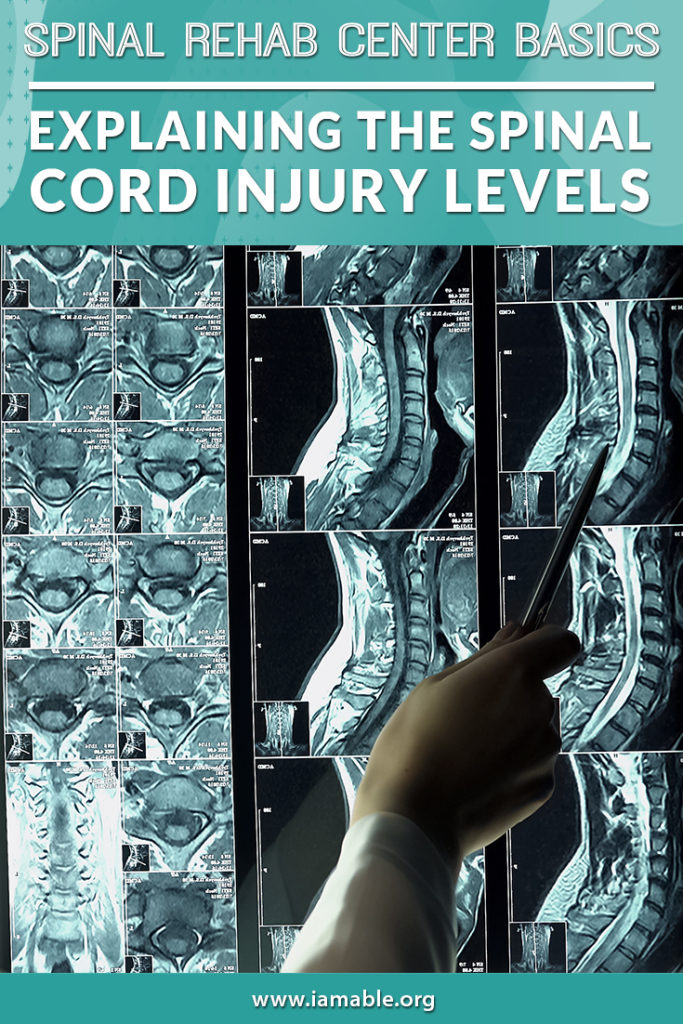Miami, FL 33186

Spinal cord injury levels can vary in extremes depending on the location along the spine where the injury has occurred. To find the right spinal rehab center and get the recovery help that you need to improve your outcome, you need to understand SCIs. We are going to divide the spine into upper, middle, and lower regions. Within these regions, we will discuss the nerves and what affects an SCI will have based on the location of the damage.
The top seven vertebrae in the neck are known as the cervical spine. However, there are eight cervical nerves with the eighth nerve existing in between the C7 vertebra and the T1. Therefore, keep in mind that when we refer to C1-C8, we are talking about the nerves and not the vertebrae themselves.
Injuries that take place in this region result in the highest level of care. Injuries to these nerves will cause quadriplegia (paralysis in both legs and arms). Breathing and speaking may also be challenging. There may be little to no control over the bladder and bowel. Specialized wheelchairs may provide some increased mobility. However, as a general rule, SCIs in this region result in the need for 24-hour care.
The lower the injury level along the neck, the more likely a person is to retain some arm movement. In fact, if the SCI occurs at the C8, it may be possible to grip and hold objects with only minor impact on hand movements. With partial or complete use of the arms, it may be possible for a patient to gain a degree of independence. If the injury occurs in the C6 nerve or lower, an adapted vehicle could potentially make driving possible.
The thoracic vertebrae stretch from the neck to the lower back. There are 12 thoracic nerves. Once again, the level of injury will be more severe the higher the SCI takes place. However, thoracic injuries usually have better patient outcomes than cervical when it comes to mobility and independence. Here are some more details.
The upside to a thoracic SCI is that the arms are usually unaffected. However, the T1-T5 nerves do control the abdominal muscles as well as the muscles in the middle of the back and the upper chest. This can cause complications when it comes to sitting up. Your spinal rehab center may help you to stand in a frame or even move with the assist of a machine like the Lokomat. In the latter case, you hang above an exoskeleton with straps to secure the lower half of your body. The exoskeleton then walks on a treadmill to simulate walking for your body.
Even at this level of the spine, an SCI is still likely to result in paraplegia (paralysis in the legs). However, you may have totally normal movement in the upper half of your body. Depending on the level of the injury in this region of the spine, you may have some degree of back or abdominal mobility issues. This is the level of SCI where sitting becomes more manageable and the degree of independence that you can retain becomes even higher. You will likely be able to operate a manual wheelchair and drive a modified vehicle. Occupational therapy can help you to perform most tasks that you require from your chair.
The lower back is made up of two regions. There are five lumbar nerves followed by five sacral nerves. While injuries in the lowest parts of the spine do not usually lead to paralysis, they can cause a number of health issues that still require support from a spinal rehab center.
When an SCI occurs in this part of the spine, you may still experience reduced function in your legs and hips. Bladder and bowel control problems are also common with this level of injury. Some patients still require a wheelchair due to paresis (weakness) in the legs. It is not full paralysis, but it may make it difficult to carry your own body weight or walk unassisted.
Injuries at this level usually result in the same bladder and bowel issues as lumbar injuries. However, the odds of restoring the ability to walk increase significantly. There may still be some small loss of function and weakness, but it will most likely not result in the need for a wheelchair.
Understanding the different needs of an SCI survivor based on the level of injury is one crucial factor in your search for a spinal rehab center. Before you get started, iAM ABLE would like to help by offering you an eBook entitled 7 Unbelievably Important Steps to Take to Thrive after Paralysis. What is the purpose of the book?
At iAM ABLE, we use the perfect blend of modern technology and traditional physical therapy to help SCI survivors to maximize their independence. Contact us today to learn more.
Grab our free e-book 7 Unbelievably Important Steps to Take to THRIVE after Paralysis by clicking the image below.
